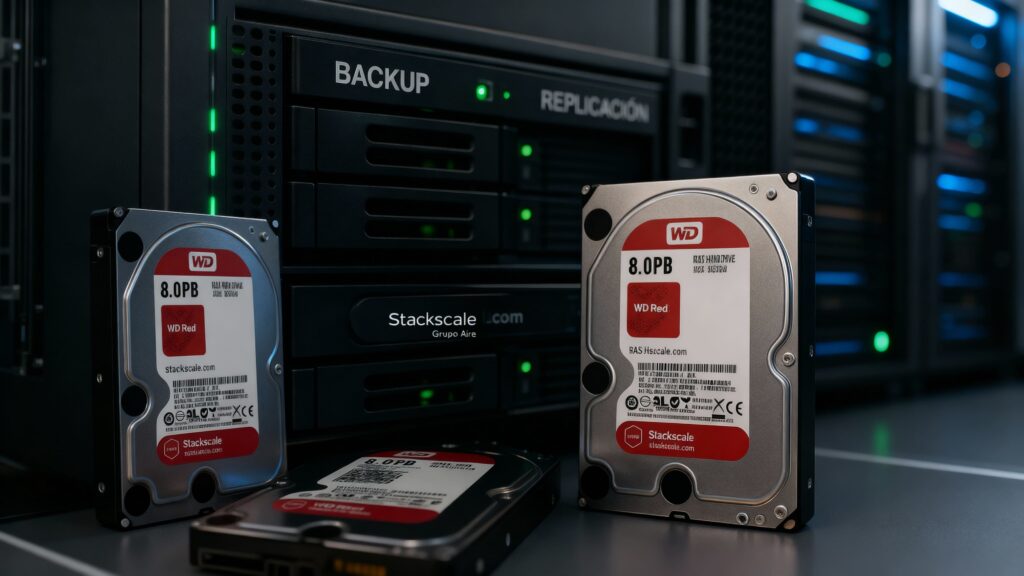The recent fire at South Korea’s government data center, which permanently destroyed the files of 750,000 public officials, has exposed an uncomfortable truth: not everything called “cloud” truly is. The incident, which affected the government’s G-Drive and 96 critical systems, illustrates the risks of relying on centralized architectures without geographic redundancy or external backups like those of the NIRS (National Information Resources Service) in Daejeon, South Korea.
When the “cloud” fits in a building
“What happened in Korea is not a cloud problem, but a design issue,” explains David Carrero, co-founder of Stackscale, a European company specializing in private cloud infrastructure and bare-metal solutions. “A real cloud isn’t a single data center with lots of storage; it’s geographic redundancy, automated replica management, and disaster recovery. If a local disaster can wipe out your service, you haven’t built a cloud, you’ve built a single point of failure.”
The Korean case revealed critical design flaws: monolithic storage without external replicas, 96 critical systems under the same failure domain, and complete dependence on a single physical location. The result: permanent data loss and thousands of hours of lost productivity.
From the 3-2-1 rule to 3-2-1-1-0: an evolution in resilience
The traditional backup strategy, known as the 3-2-1 rule (three copies, two media types, one offsite), has proven insufficient against modern threats like ransomware or provider outages. The evolution toward the 3-2-1-1-0 rule adds critical layers of protection:
- 3 copies of critical data
- 2 different media types
- 1 copy off the primary site
- 1 offline or air-gapped copy
- 0 verified errors through regular testing
This approach recognizes that current risks extend beyond hardware failures. Ransomware attacks have evolved to encrypt not only production data but also network-connected backups, while even tech giants have experienced permanent data loss due to administrative errors.
Active-active architectures: production that survives disaster
“The best insurance isn’t just one, it’s several,” states Carrero. “Active-active production across two different data centers, plus immutable copies in a third location. That way, if one site fails, you switch; and if everything goes wrong, you restore from an unaltered copy.”
Solutions with synchronous geo-replication enable deploying mission-critical environments with RPO=0 (no data loss) and RTO=0 (no downtime). These systems replicate data in real-time between geographically separated data centers, ensuring information remains accessible even during complete site disasters.
The difference between active-active and active-passive architectures lies in response time: the former distributes load and survives failures immediately, while the latter requires a failover but is more cost-effective when minimal downtime is acceptable.
The third pillar: immutable backups in an independent location
Beyond redundant production, a comprehensive strategy requires a third element: backups stored in a failure domain independent of the primary site, utilizing WORM (Write Once, Read Many) technologies or air-gap solutions that prevent modification or encryption by ransomware.
“At Stackscale, we deploy active-active or active-passive geo-redundant environments, complemented with copies in another data center,” explains Carrero. “For immutable backups, we use tools like Proxmox Backup Server or Veeam, which support WORM retention, restoration verification, and anomaly alerts. The key isn’t just the software but the design and testing—without testing, there’s no disaster recovery plan.”
Open source alternatives: democratizing resilience
Proxmox Backup Server offers an enterprise-grade open source alternative to proprietary solutions like Veeam or Nakivo. Built on Debian and fully developed in Rust to maximize performance and memory efficiency, it includes critical features such as:
- Incremental backups with automatic deduplication
- Ultra-fast compression with Zstandard
- Support for Secure Boot
- Synchronization between local and remote repositories
- Fast granular recovery of VMs, containers, or individual files
- Native integration with Proxmox VE and compatibility with VMware, Hyper-V, Kubernetes, and others
Its AGPL v3 license model allows organizations of any size to implement robust backup strategies without licensing costs, while subscription-based enterprise support provides extra peace of mind for critical production environments.
Checklist: how to avoid repeating Daejeon
Organizations can evaluate their resilience based on these minimum criteria:
- At least two locations for production (active-active or proven failover)
- Backups stored in a third site, immutable via WORM or air-gap
- Defined RPO and RTO for each service, regularly tested
- Restorations tested quarterly or semiannually, not just ‘backup OK’ logs
- Credential segregation for backups with multi-factor authentication
- Anomaly monitoring: mass deletions, encryption, policy changes
- Regulatory compliance: ENS/ISO 27001 with audit trails
- Control over SaaS: export, retention, and provider independence
Conclusion: discipline over glamour
The Korean incident reminds us of a fundamental truth: resilient infrastructure isn’t built with marketing hype but with engineering discipline. Genuine geographic redundancy, immutable external copies, and regular recovery testing are the only elements that prevent a physical disaster from becoming a permanent digital catastrophe.
“It’s not glamour, it’s discipline,” Carrero concludes. “And that’s the only way to prevent your digital memory from burning when a data center goes up in flames or simply fails.”
About Stackscale
Stackscale (Aire Group) is a European company within the Aire Group, specializing in private cloud and bare-metal infrastructure, operating over 8 data centers primarily located in Madrid and Amsterdam. It offers solutions with synchronous geo-replication, private cloud with Proxmox VE or VMware, high-performance dedicated servers, and managed services for companies that need full control over their IT infrastructure without sacrificing cloud resilience.

